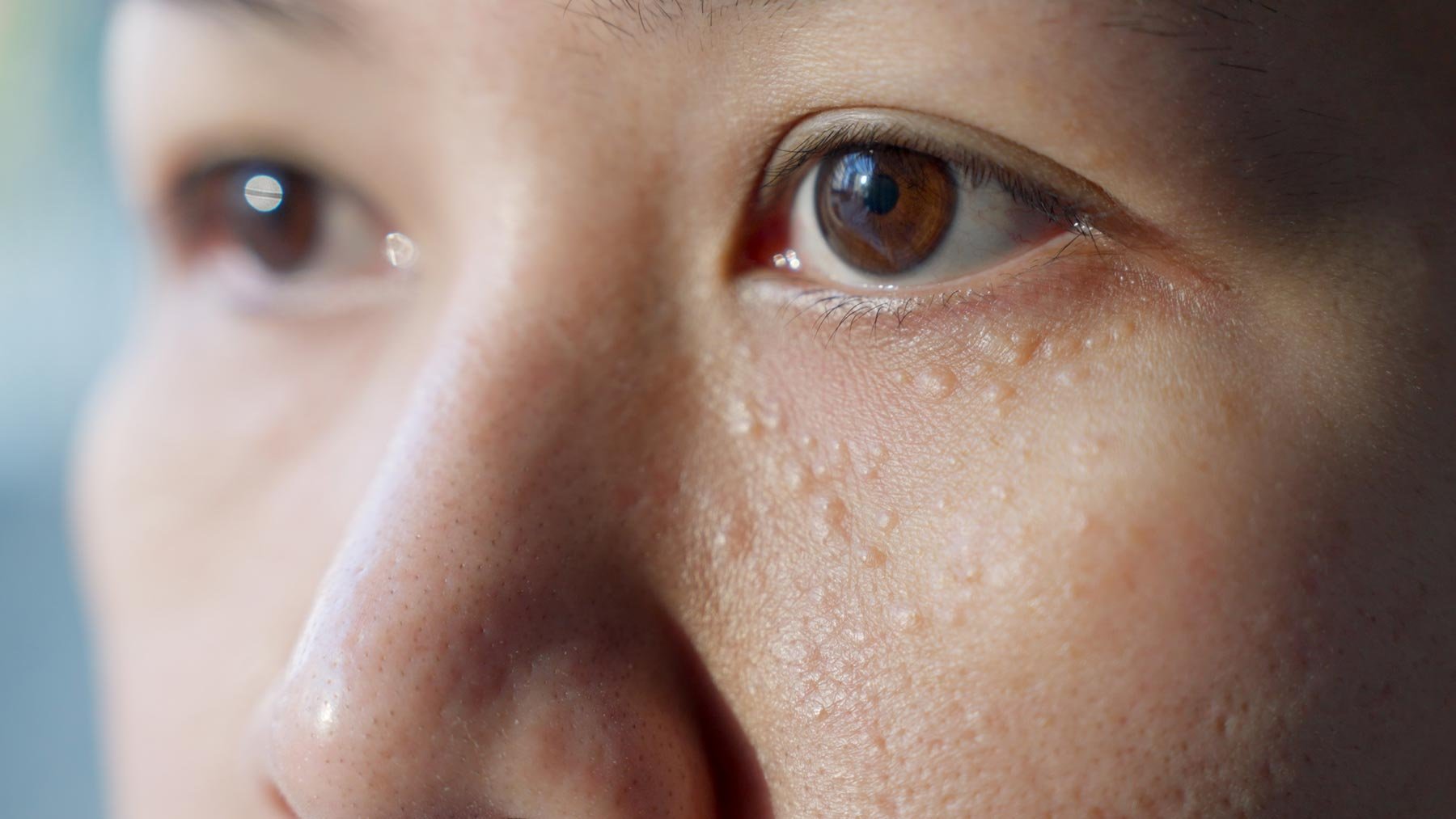
Milia
Milia are small, white bumps that commonly appear on the skin, particularly on the face, around the eyes, and on the chest. They are caused by the accumulation of keratin, a protein that is found in the outer layer of the skin. Milia are benign (non-cancerous) and are not contagious.
Milia are more common in newborns and are often referred to as "baby milia." They usually disappear on their own within a few weeks or months. Milia may also occur in adults, particularly in people who have certain skin conditions, such as sun damage or eczema, or who use certain medications, such as corticosteroids.
Symptoms of milia may include the presence of small, white bumps on the skin that are firm and smooth to the touch. The bumps may be single or multiple and may range in size from small to large. Milia may cause no symptoms at all, or they may be accompanied by itching or a burning sensation.
Treatment for milia is generally not necessary, as the bumps will often disappear on their own within a few weeks or months. However, some people may choose to have milia removed for cosmetic reasons. Treatment may involve the use of over-the-counter or prescription creams or ointments, or may involve more aggressive treatment, such as surgical removal or laser therapy.
In addition to treatment, there are several steps you can take to help reduce your risk of developing milia:
Use a gentle, non-irritating cleanser to help prevent the buildup of keratin
Avoid using harsh exfoliants or scrubs, as these can damage the skin and increase the risk of milia
Avoid picking at or squeezing the bumps, as this can cause infection or scarring
Use a broad-spectrum sunscreen with an SPF of 30 or higher on a daily basis, even on cloudy days, to help protect your skin from sun damage
By following these precautions and seeking treatment as needed, you can help to manage milia and reduce your risk of developing this type of skin condition. If you are concerned about milia or have any other changes in your skin, it is important to see a healthcare provider for evaluation and treatment.

